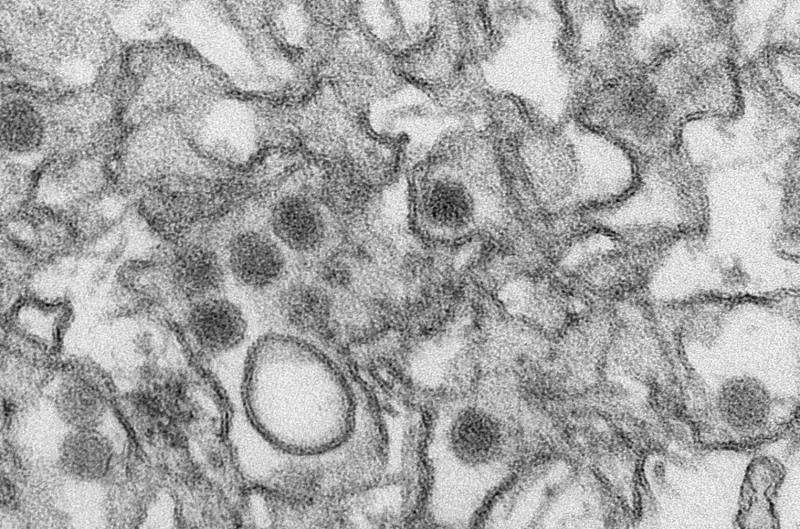Transmission electron micrograph (TEM) of Zika virus. Credit: Cynthia Goldsmith/Centers for Disease Control and Prevention
Pregnant women infected with the Zika virus last year were 20 times more likely to bear children with birth defects than those who gave birth prior to the epidemic, US health officials said Thursday.
Researchers for the US Centers for Disease Control and Prevention compared birth outcomes prior to the Zika epidemic's outbreak in 2015—using data from three US state registries—to those of mothers infected by the virus in 2016.
The defects included microcephaly—a crippling deformation that leads to babies having very small brains and heads—as well as poor cranial development, neural tube defects and other brain or eye abnormalities.
The study found that those defects were seen in about three live births per 1,000 in 2013 and 2014.
But in 2016 abnormalities were found in some 60 infants and fetuses per 1,000 when their pregnant mothers were infected by Zika.
Among infected women, the virus was also responsible for 48 percent of miscarriages and 66 percent of premature births, with fetuses frequently suffering from neural tube defects or other brain abnormalities in early stages of development.
Another CDC study released in December showed that the rate of defects was higher—11 percent—among women who were infected with Zika in the first trimester of their pregnancies.
The CDC reiterated recommendations that pregnant women in the US avoid visiting countries where mosquito-borne transmission of the virus is active, and to avoid sexual contact with partners who have visited those areas.
Zika symptoms are often mild and include body pain, red eyes and a rash.
Four out of five people report no symptoms at all, making the infection particularly difficult to prevent.
© 2017 AFP





















